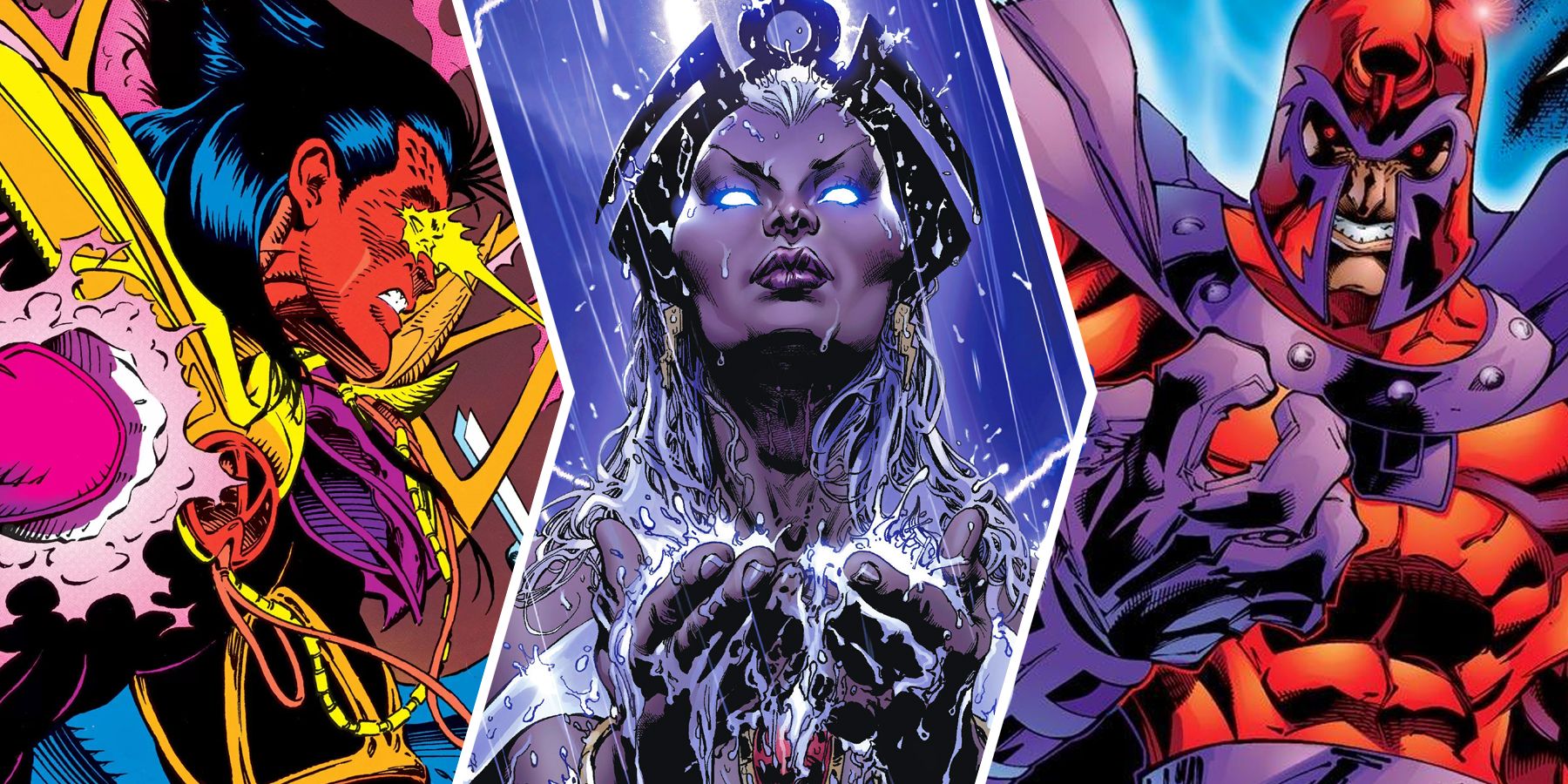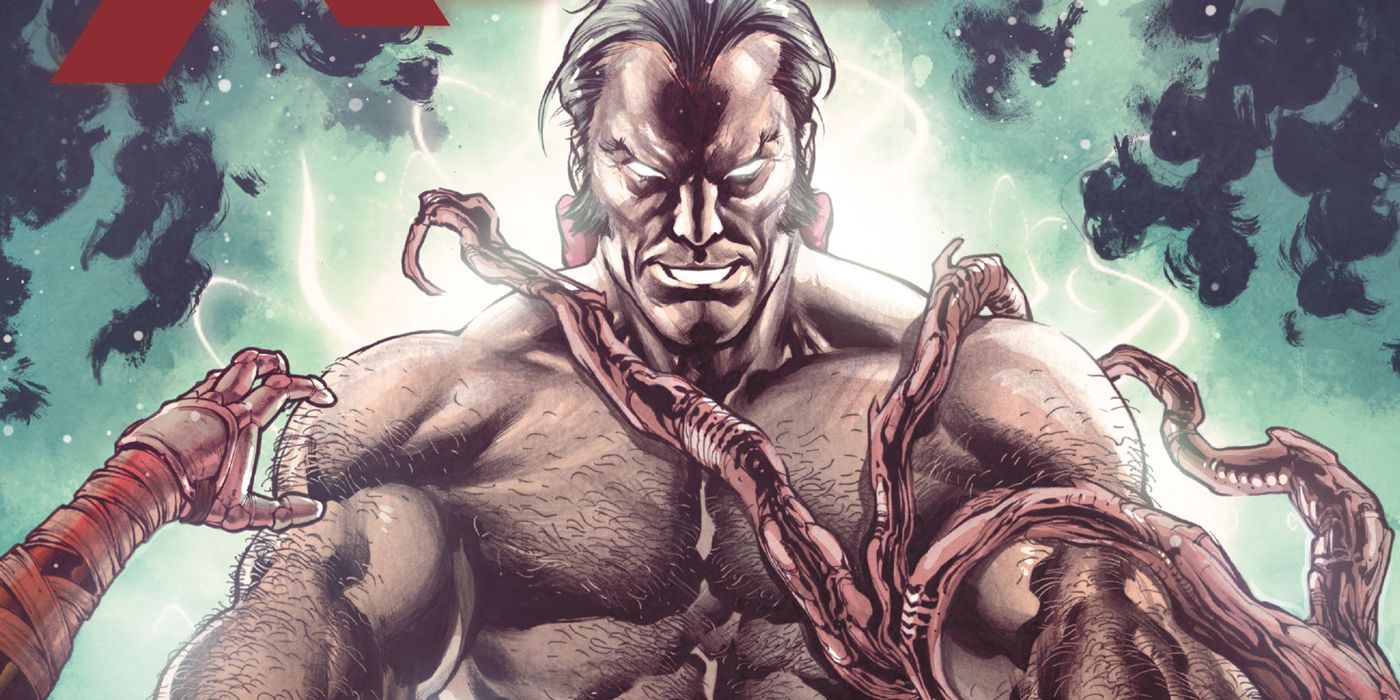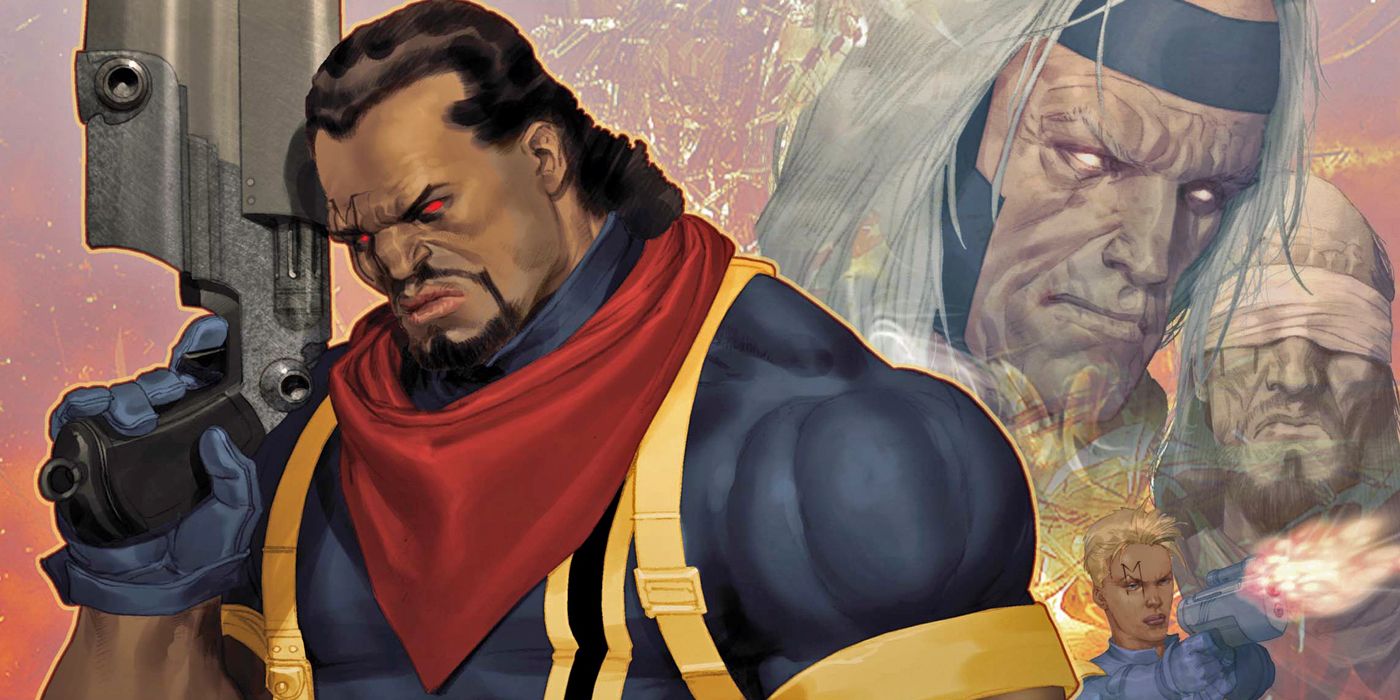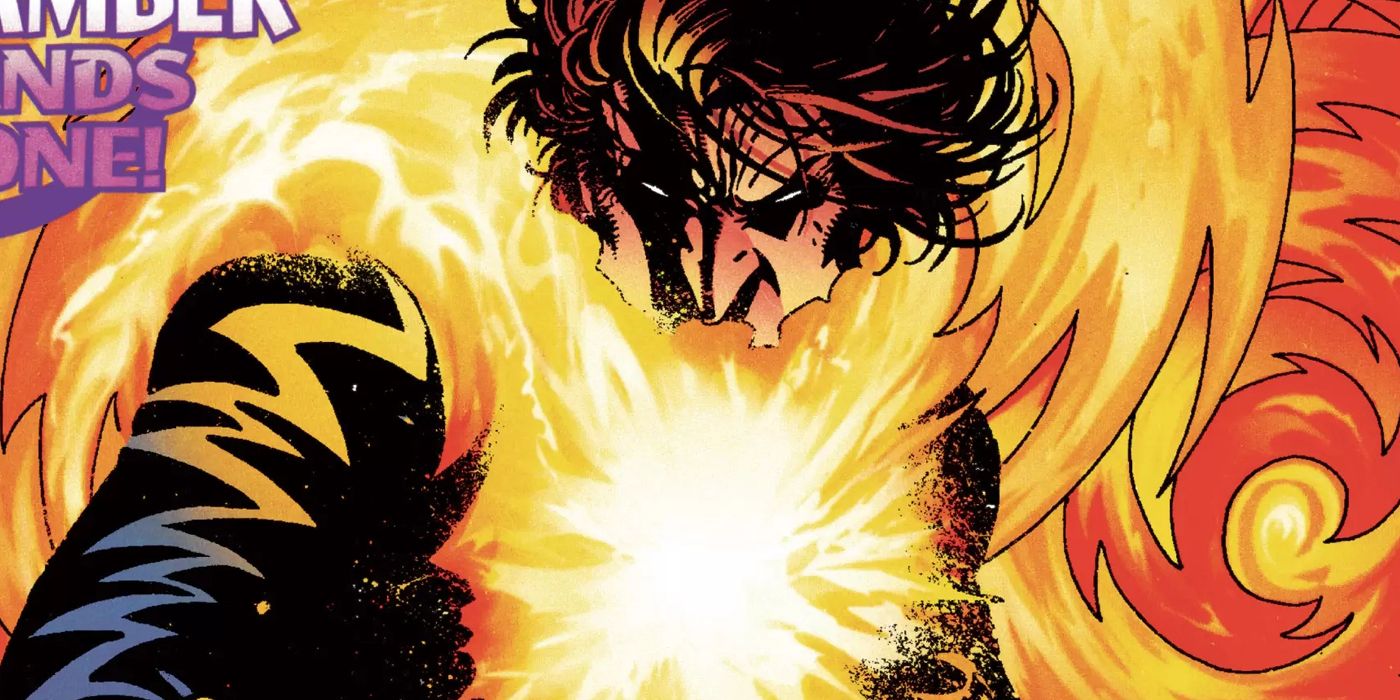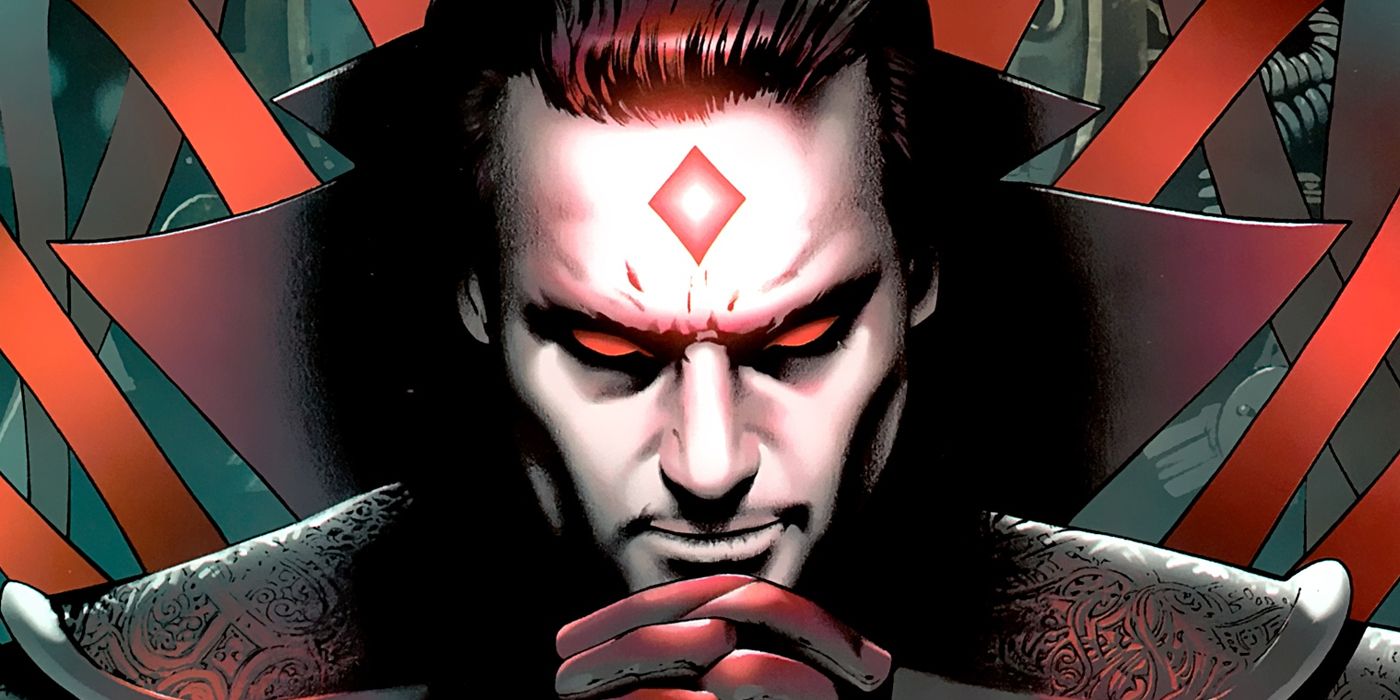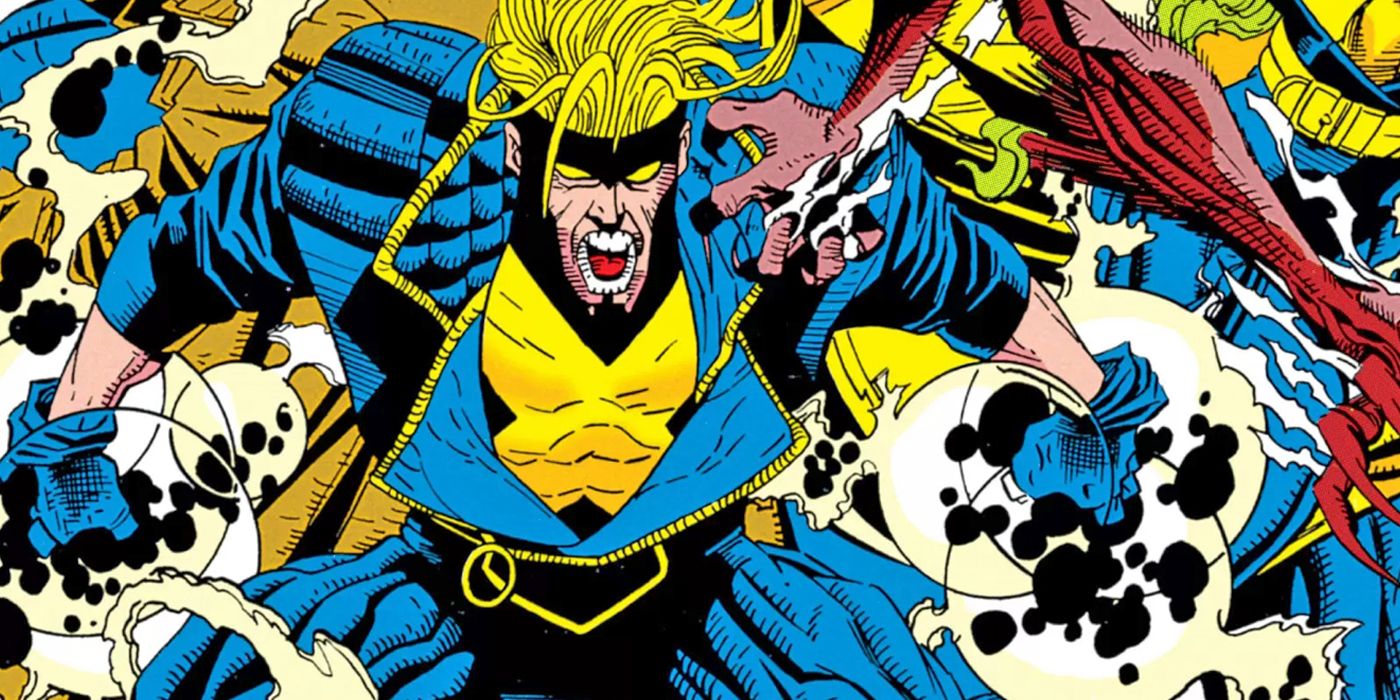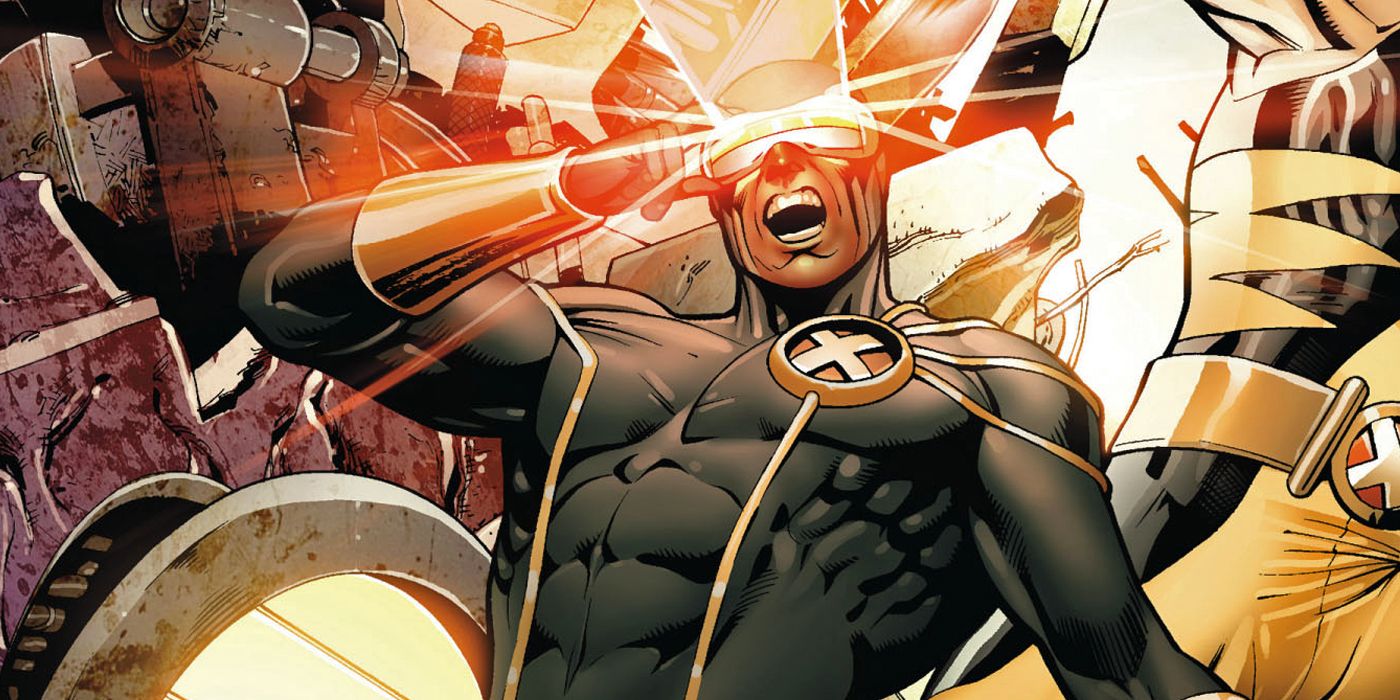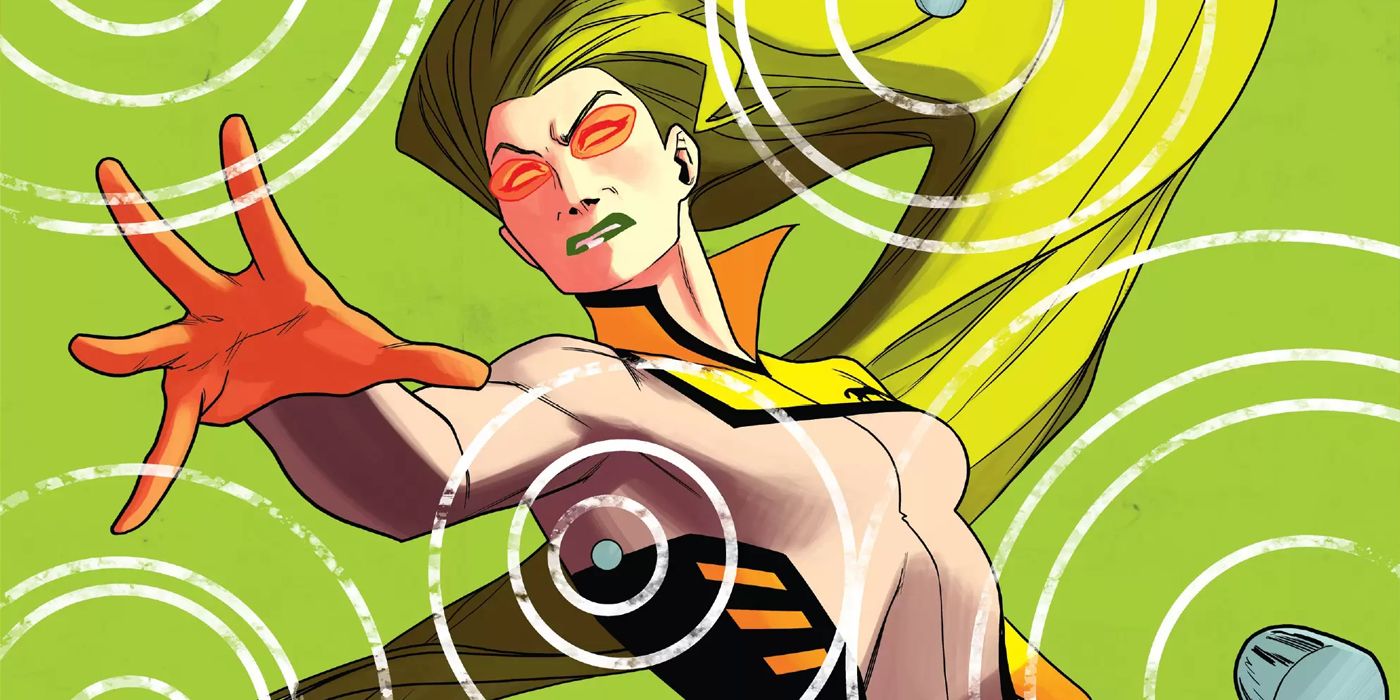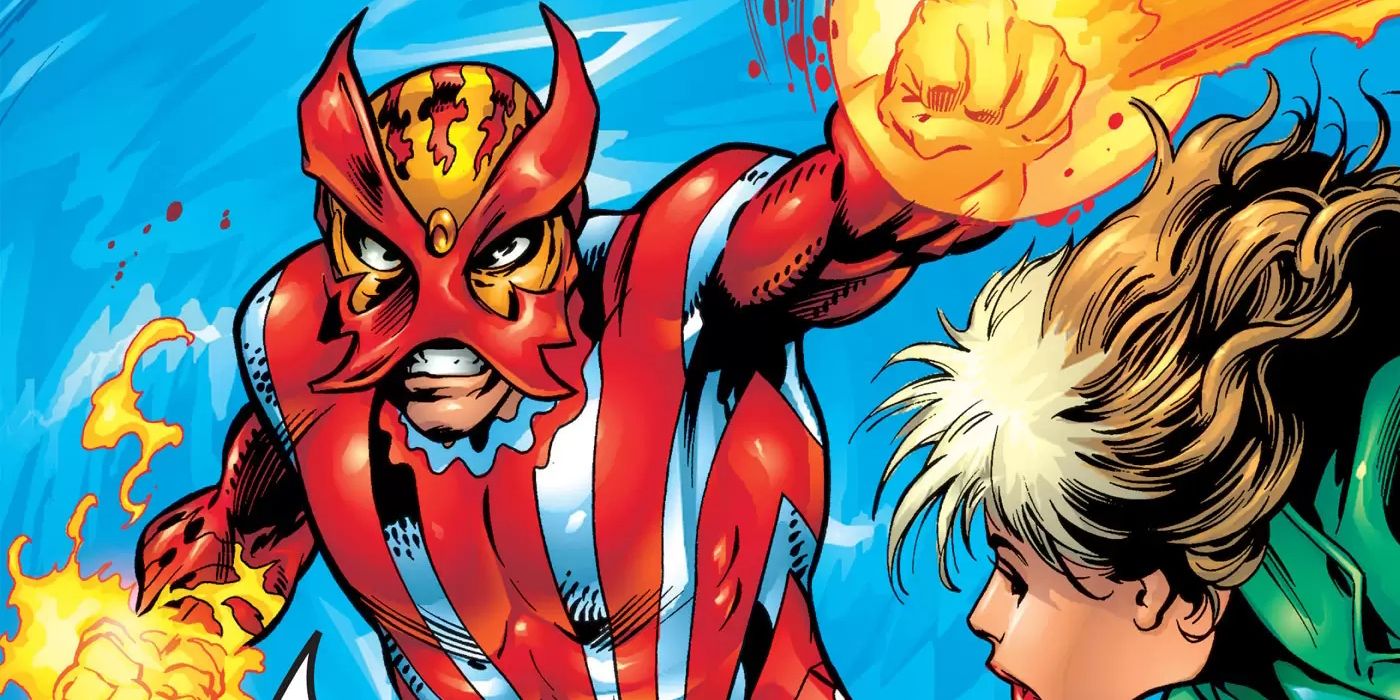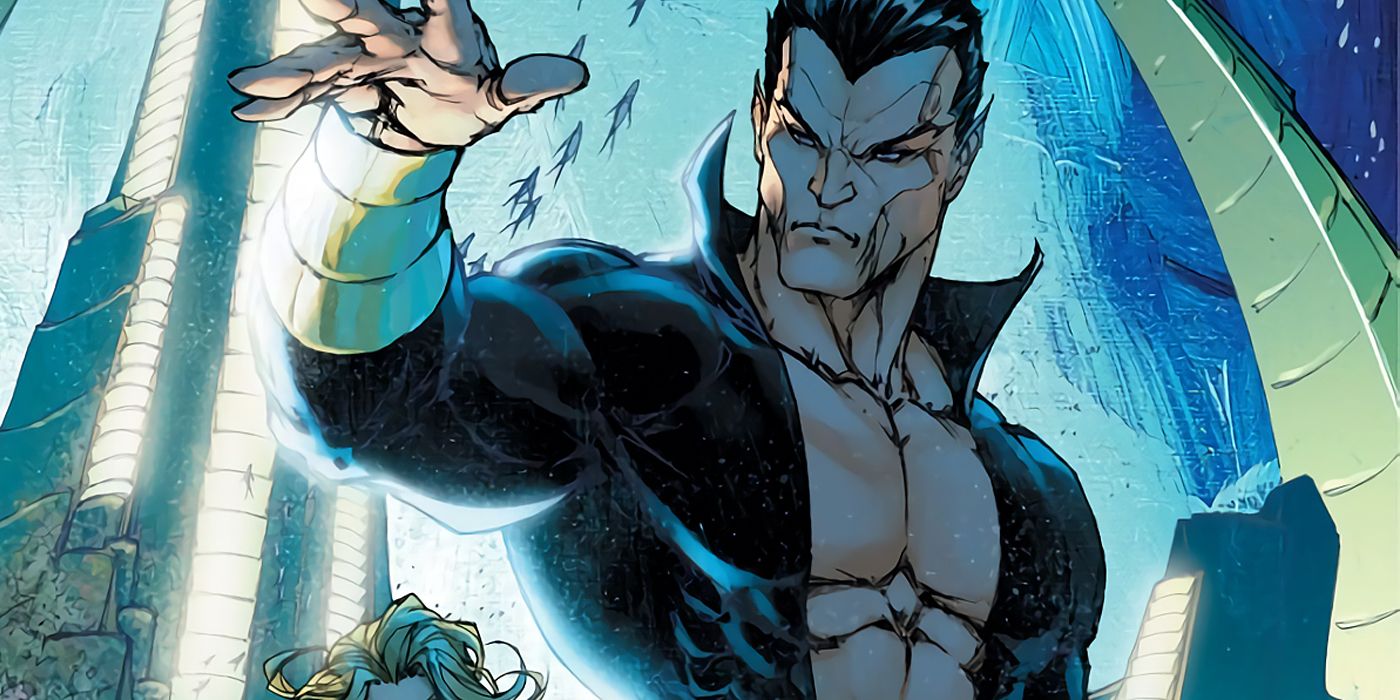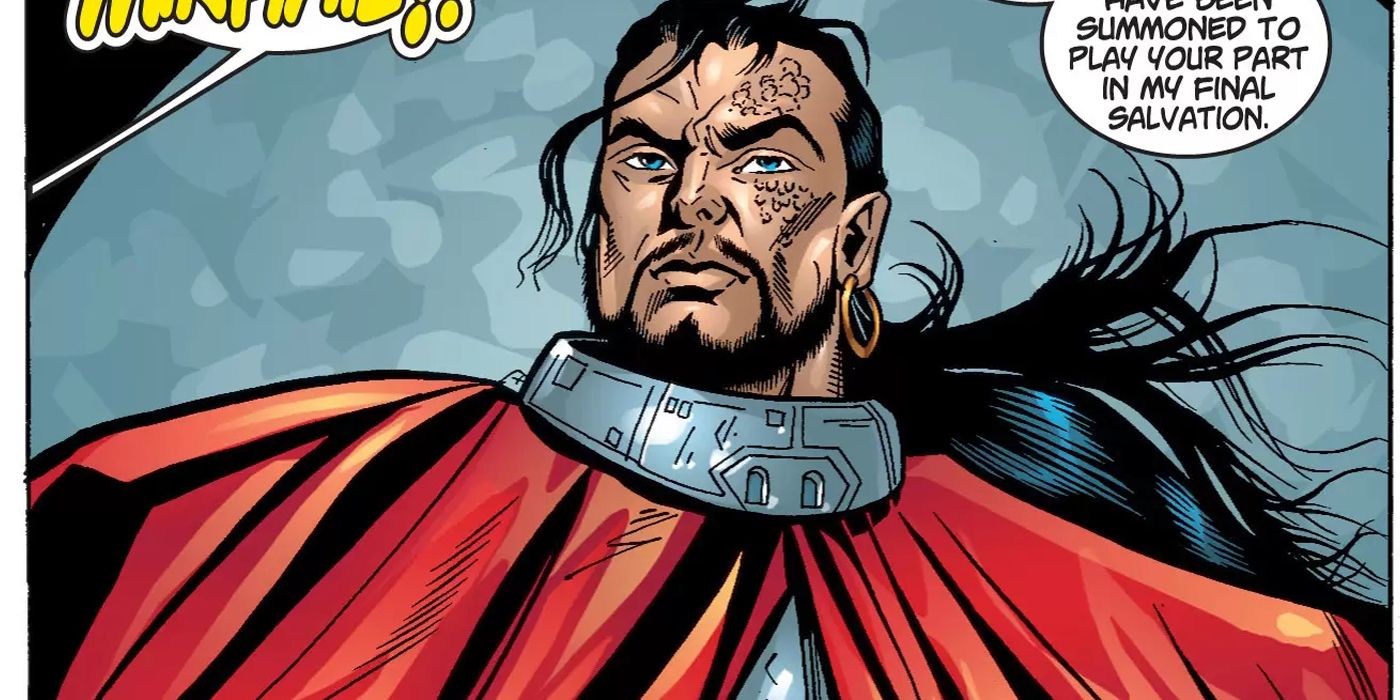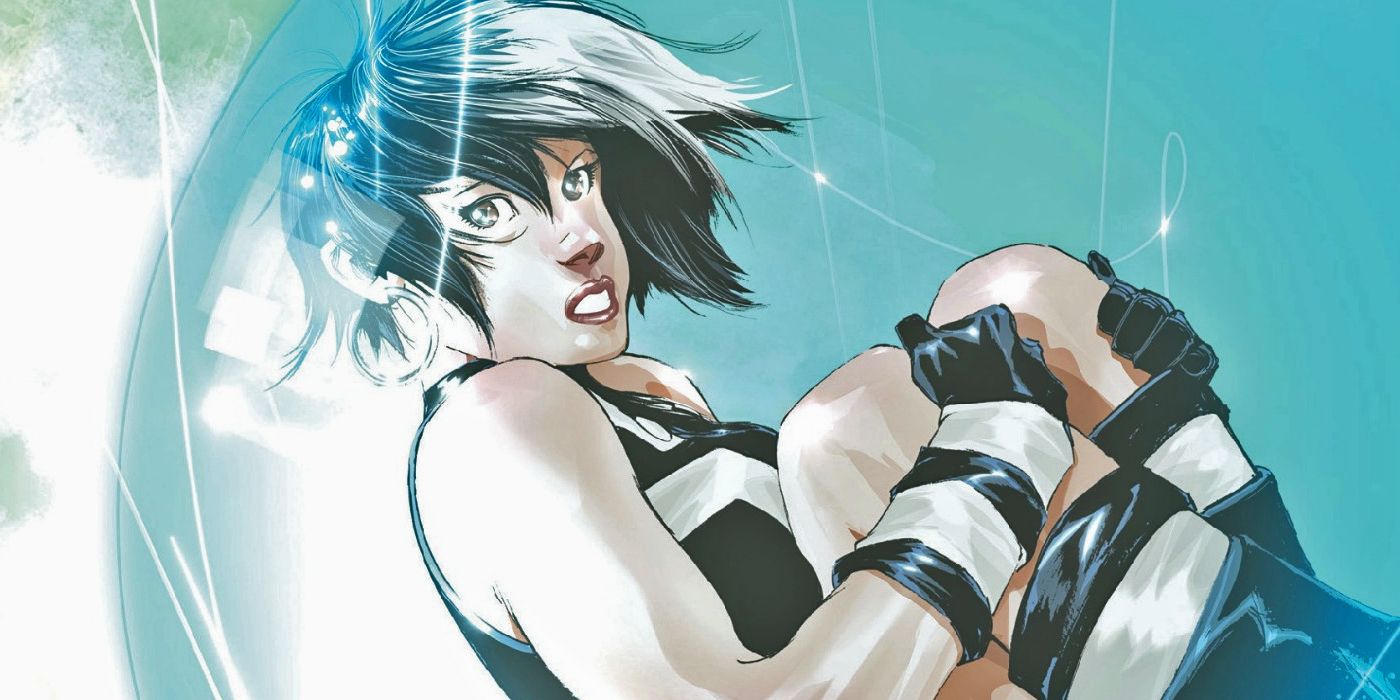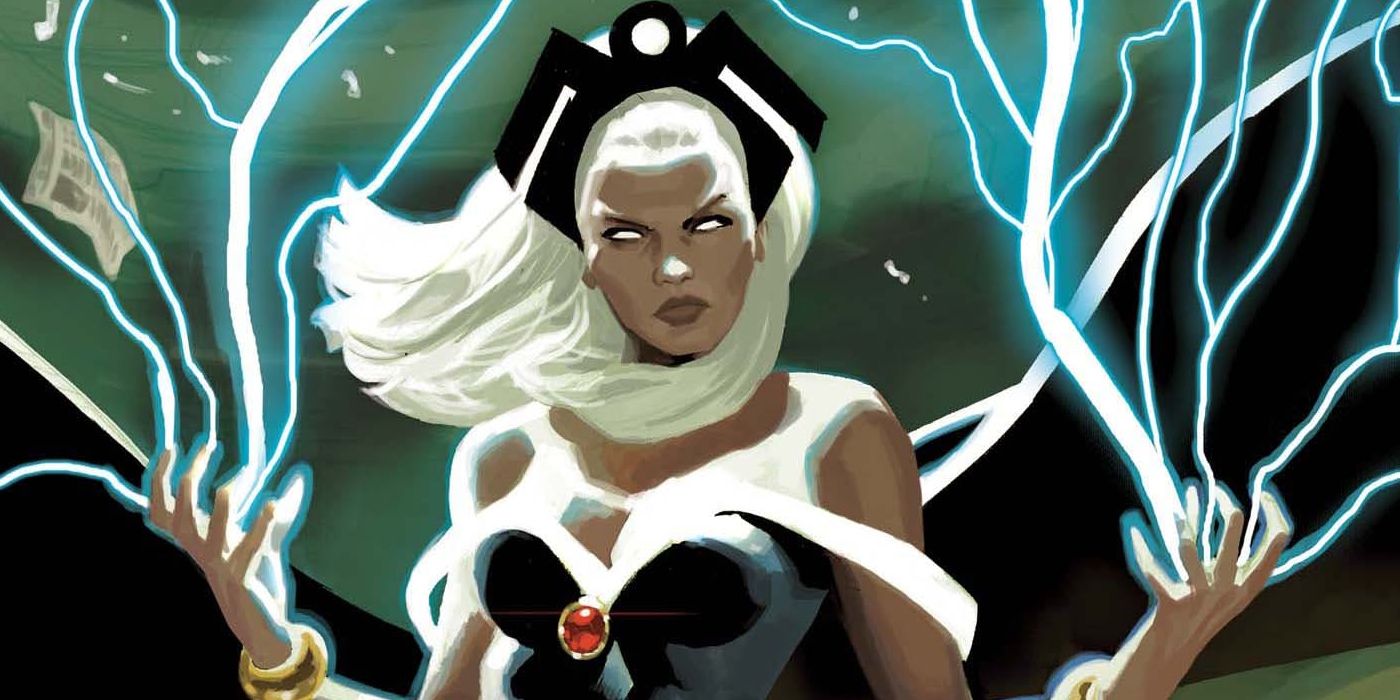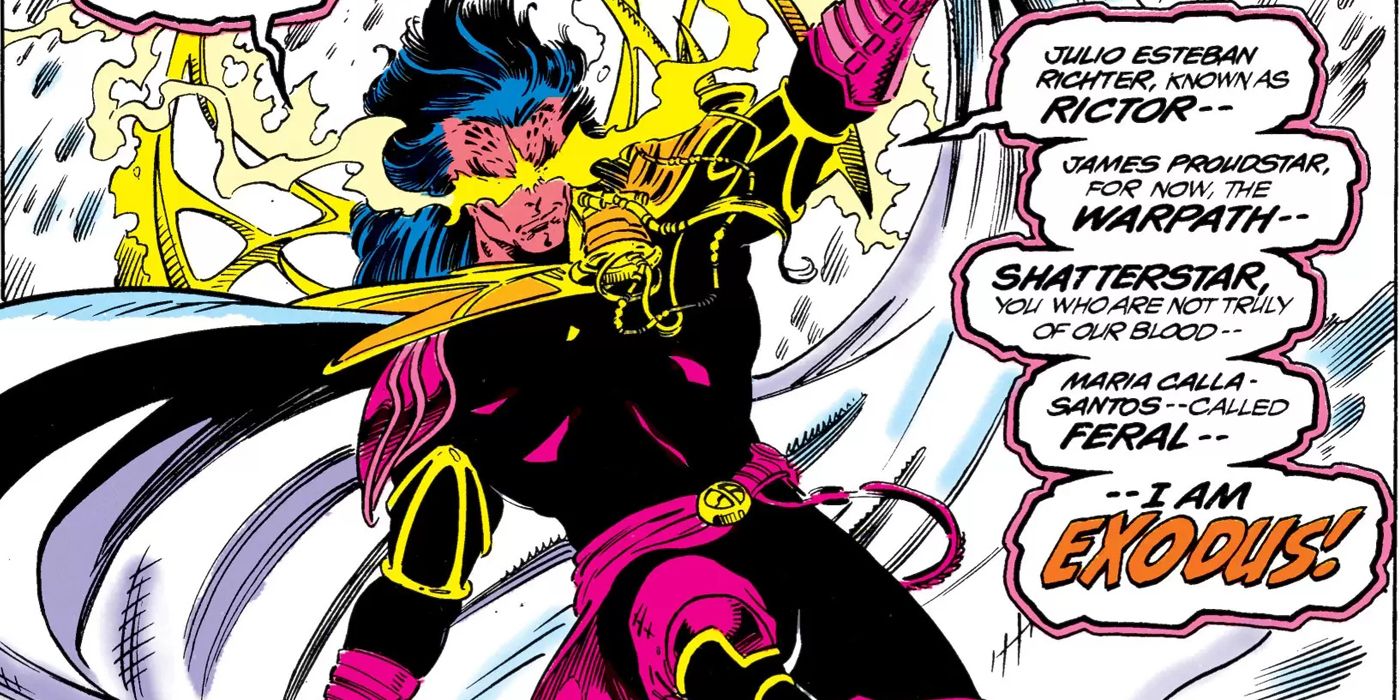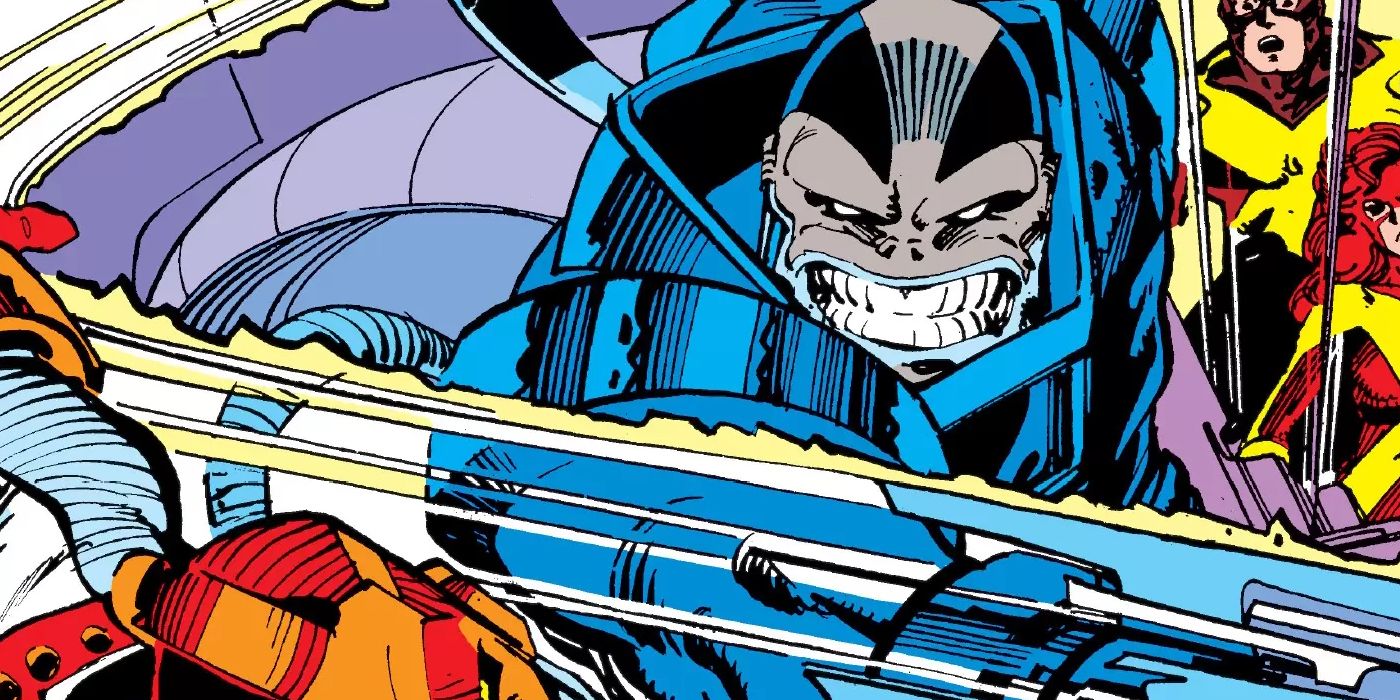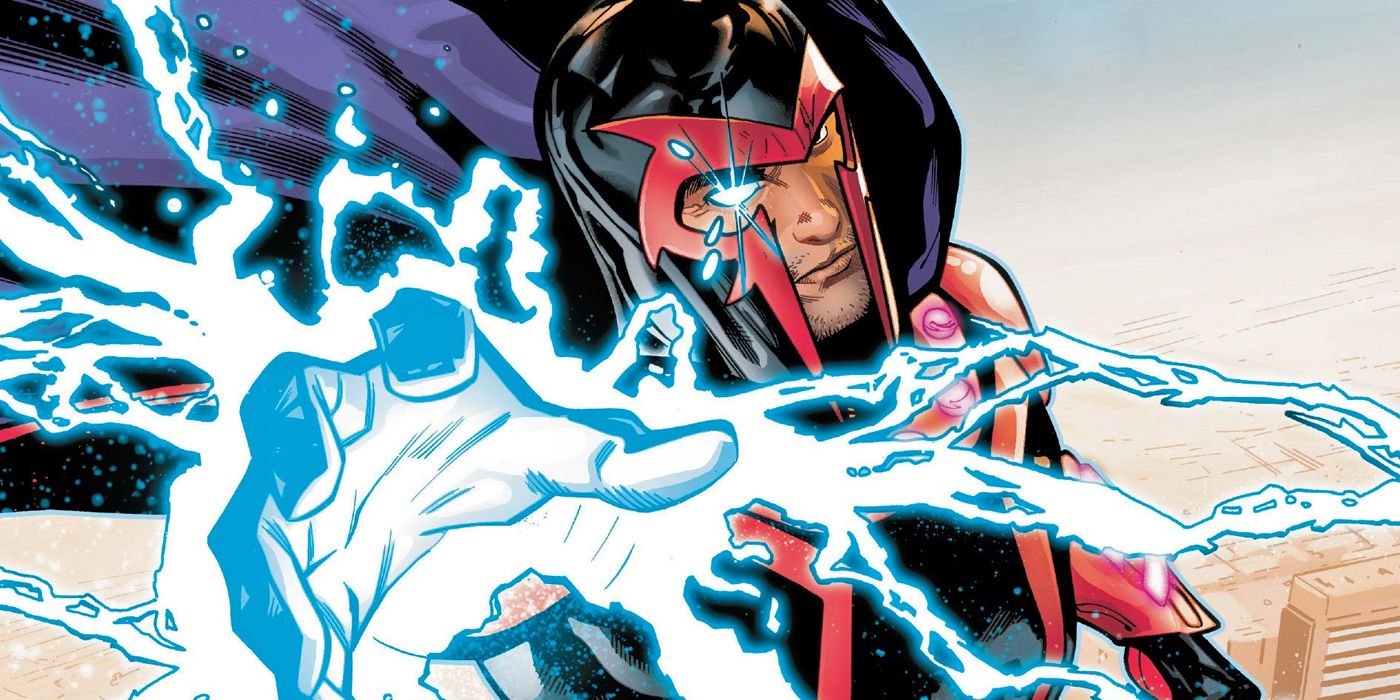It's easy to forget how powerful the X-Men really are. When you think about the collective might of Marvel's mutants, you can understand why most of the Marvel Universe hates or fears them. Over the years, Marvel has tried to quantify the strength of the X-Men's mutant powers with a few vaguely-defined, inconsistently used phrases. Generally, characters with an unlimited amount of power are called Omega-Level mutants. While Omega-Level characters like a Phoenix-wielding Jean Grey or the reality-warping Legion have incomprehensible, universe-shaking amounts of power, the next most powerful mutant class, Alpha-Level mutants, wield energy and elemental forces on a slightly smaller planetary scale.
Now, CBR is counting down the most powerful Alpha-Level mutants in the Marvel Universe. In this list, we'll be looking at heroes and villains who have been explicitly referred to as Alpha-Level mutants or mutants who've had their powers described in quantifiably similar terms. However, this list won’t include Alpha-Level characters who were later reclassified as Omega-Level mutants like Legion, Jean Grey, Iceman or Cable. Some characters like Professor X, Psylocke and Emma Frost have also been described as Omega-Level telepaths, though it's not clear if that means they're also Omega-Level mutants. To keep things simple, we won't be including those characters either.
15 SEBASTIAN SHAW
As the Black King of the secret, influential Hellfire Club, Sebastian Shaw has been a consistent thorn in the X-Men's side for decades. While he doesn't seem like a major threat at first glance, Shaw hides his powerhouse strength behind his vast resources and ornate costumes. With the ability to absorb kinetic energy and channel it into his super-strength and endurance, Shaw has caused problems for the X-Men since he was created by Chris Claremont and John Byrne in 1980's X-Men #129. While Shaw still gets stronger with every hit he takes, he got a recent power boost that helped him absorb other kinds of energy more easily.
Shaw even beat up Hercules and several other Avengers in one-on-one combat!
In the X-Men's files, Shaw was listed as an Alpha-Level mutant during 1999's X-Men #94, by Alan Davis and Terry Kavanagh. While he doesn't have the most explosive mutant powers, a fully-charged Shaw is on par with some of the strongest heroes in the Marvel Universe. In 2012's Avengers Academy #30, by Christos Gage and Tom Grummett, Shaw even beat up Hercules and several other Avengers in one-on-one combat. Despite his strength, Shaw's powers can be overloaded if he tries to absorb too much energy from too many sources at once. On a slightly more embarrassing note, Shaw's also been defeated a few times by being thrown into the upper atmosphere, far away from the battlefield.
14 BISHOP
Even though Bishop is most famous for being one of the X-Men's resident time-travelers, he has some considerable mutant powers of his own. When he was created by Whilce Portacio, Jim Lee and John Byrne in 1991's Uncanny X-Men #282, the mutant policeman from a possible future traveled to the present-day Marvel Universe while chasing the criminal Trevor Fitzroy. Using his mutant ability to absorb and redirect energy as a concussive blast, Bishop became one of the defining X-Men of the 1990s.
Like many of the characters on this list, Bishop was identified as an Alpha-Level mutant in X-Men #97, by Alan Davis and Terry Kavanagh. In the storyline, "Apocalypse: The Twelve," the ancient mutant Apocalypse gathered Bishop and several other Alpha-Level mutants as part of a plan to make himself omnipotent. Although Bishop served as a kind of chronal anchor in the ritual, his energy re-directing powers shouldn't be underestimated. Although the upper limit of Bishop's abilities has never been revealed, he single-handedly saved the X-Men by taking a blast of energy from the villain Onslaught. In 1996's Onslaught: X-Men #1, by Mark Waid, Scott Lobdell, Andy Kubert and Dan Green, Bishop absorbed a psionic blast that was strong enough to wipe out "1,000 mutants."
13 CHAMBER
The young mutant Chamber has gone through a lot of changes since he was created by Scott Lobdell and Chris Bachalo in 1994's Generation X #1. When Jonothon Starsmore's fiery psionic powers emerged, his entire chest and part of his face were replaced by a seemingly endless well of energy. After a lengthy tenure with the young X-team Generation X, Jono briefly lost his powers, but received an unusual treatment from Clan Akkaba, the descendants of the X-Men villain Apocalypse. The Clan told Chamber that he was a very distant relative of the villain and healed him with an injection of Apocalypse's blood. After a few years, Chamber's usual powers returned and claimed a decent chunk of his torso once again.
In his first appearance, Chamber was described as one of one of the most powerful mutants to walk the Earth.
In 2006's New Excalibur #9, by Frank Tieri and Scott Kolins, the X-Men's ally Peter Wisdom said that Chamber was a "potential Omega-Level mutant" after he received Apocalypse's blood transfusion. While that status was never elaborated on, the same phrase has also been used to describe confirmed Alpha-Level mutants like Storm, so we have a good idea of his relative power level. Regardless of his official designation, Chamber still held his own in battle against powerhouses like Legion and Omega Red.
12 MISTER SINISTER
Technically, the longtime X-Men villain Mister Sinister probably shouldn't be on this list. Even though Nathaniel Essex was born as a human in 19th century England, the mad scientist has given himself an array of powers after centuries of twisted experiments involving mutant DNA. While Apocalypse gave him his first set of regenerative powers, Sinister was operating as an independent villain when readers met him in 1987's Uncanny X-Men #221, by Chris Claremont and Marc Silvestri. Since then, Sinister has proven himself to be one of the X-Men's most fearsome foes in stories like "Mutant Massacre," where Sinister's forces wiped out a group of sewer-dwelling mutants called the Morlocks.
Even though Sinister is more of a "mutate" than a mutant, he was officially listed as an Alpha-Level mutant in the X-Men's records in 1999's X-Men #94, by Davis and Kavanagh. Thanks to his never-ending genetic experiments, Sinister has a vast set of powers that includes abilities like telepathy, telekinesis, force fields, power-dampening abilities, energy blasts, shape-shifting, super-strength and a comprehensive healing factor that basically makes him immortal. Even when his physical body has been destroyed, Sinister has found ways to survive through an endless series of clones and backup bodies.
11 HAVOK
Even though Havok is one of Marvel's more powerful mutants, it's easy to lose sight of the X-Man in the shadow of his more famous family members. After he was created by Arnold Drake and Don Heck in 1969's X-Men #54, Alex Summers struggled to distinguish himself from the legacy of his older brother, the X-Men's leader Cyclops. While he hasn't always embraced the superhero lifestyle, Havok eventually established himself as one of the better leaders in the Marvel Universe by leading squads of X-Men, X-Factor and the Avengers.
With the mutant power to absorb ambient cosmic energy and channel it into plasma blasts, Havok has definitely lived up to his destructive codename on the battlefield.
Like several other X-Men, Havok was confirmed to be an Alpha-Level mutant in 1999's X-Men #94, by Davis and Kavanagh. While he's used a containment suit to help him direct his powers, a young Havok was able to knock the Hulk unconscious with a focused beam of energy in 1972's Incredible Hulk #150, by Archie Goodwin and Herb Trimpe. At the peak of his powers, Havok was even able to absorb all of the energy from a nearby star to defeat his other brother, the hyper-powerful Vulcan in Chris Yost and Paco Diaz's 2008 miniseries X-Men: Emperor Vulcan.
10 CYCLOPS
As the X-Men's most famous leader and a master tactician, Cyclops is one of the most famous characters in the Marvel Universe. Like Havok, Scott Summers has powers that revolve around absorbing vaguely-defined ambient energy and channeling it into devastating energy blasts. While Cyclops' optic blasts have occasionally been described as a kind of heat vision, they're usually just a pure, concussive force. After sustaining head trauma during a childhood plane crash, Cyclops lost the ability to naturally control his mutant powers. That's why he's relied on his trademark visor to control the size and strength of his optic blasts since he was created by Stan Lee and Jack Kirby in 1963's X-Men #1.
Cyclops' status as an Alpha-Level mutant was confirmed in 2000's X-Men #97, by Davis and Kavanagh. While his optic blasts might seem relatively simple at first (ahem) glance, Cyclops' blasts can produce more energy than a nuclear bomb. Cyclops' blasts are regularly described as powerful enough to cut a hole into a mountain, and he's even said that he could cut a small planet in half. In one of his most impressive displays of power, Cyclops took out Apocalypse with a single massive optic blast that reduced the immortal X-villain to shrapnel in X-Factor #68, by Chris Claremont, Jim Lee and Whilce Portacio.
9 POLARIS
Since Polaris was created by Arnold Drake and Don Heck in 1968's X-Men #49, Lorna Dane's origins have been something of a mystery. Shortly after her first appearance, Magneto, the X-Men's ultimate rival, claimed that she was his daughter. Although that fact was disputed for decades while Polaris served with the X-Men and X-Factor, Polaris eventually confirmed that Magneto was actually her biological father. Since her electromagnetic powers are basically a less refined version of Magneto's abilities, that revelation wasn't too surprising in retrospect.
Her mastery of magnetism could be on par with Magneto's!
During "Apocalypse: The Twelve," Polaris was identified as an Alpha-Level mutant in 2000's X-Men #97, by Davis and Kavanagh. Although it's never been confirmed, several sources claim that her mastery of magnetism could be on par with Magneto's abilities. However, Polaris hasn't had as much practice with her abilities as her father since she's spent a lot of time outside of combat situations, with a different set of powers, without any powers or possessed by a malicious spirit. Still, Polaris has managed to accomplish some impressive feats with her abilities. After the mutant nation Genosha was destroyed, Polaris maintained a massive magnetic field that held the final recorded moments of millions of its residents for months in 2001's New X-Men #132, by Grant Morrison and Phil Jimenez.
8 SUNFIRE
Even though he was only really an X-Man for one mission, Sunfire left a lasting impression on the team. After he was created by Roy Thomas and Don Heck in 1970's X-Men #70, the hot-tempered Shiro Yoshida joined the second generation of X-Men alongside Wolverine and Storm in Len Wein and Dave Cockrum's Giant-Size X-Men #1. While he stayed on decent terms with the team, he returned to his home, Japan, where he eventually helped form the team Big Hero Six and served on the Avengers. While his temper has cooled down a little over the years, his mutant ability to absorb solar radiation and shoot it out as fiery bursts of plasma remains as hot as ever.
Like the rest of the Twelve, Sunfire was confirmed to be an Alpha-Level mutant in 2000's X-Men #97, by Davis and Kavanagh. For the most part, Sunfire's powers are about as strong as the Fantastic Four's Human Torch. As confirmed in 1986's Official Handbook to the Marvel Universe: Deluxe Edition #12, Sunfire can produce plasma blasts around 1,000,000 degrees Fahrenheit, or about a hundred times hotter than the surface of the Sun. In 2013's Uncanny Avengers #8, by Rick Remender and Daniel Acuna, Sunfire used his atomic flame to instantly vaporize most of a city-wide spaceship that was falling towards Rio de Janeiro, Brazil.
7 NAMOR
Despite its unremarkable title, 1939's Motion Picture Funnies Weekly #1 is one of the most important comic books ever published. In that comic book, Bill Everett created Namor the Sub-Mariner, Marvel's first superhero, and inadvertently created the Marvel Universe. Over the past eight decades, Prince Namor has grown into a more fitting role as the King of Atlantis by using his ruthless nature to protect his undersea kingdom at all costs. While he's battled Marvel's heroes a few times, he's more familiar as a superhero on teams like the Avengers, the Invaders, the Defenders and the X-Men.
While mutants weren't around when Namor was created, the Sub-Mariner was later billed as "Marvel's First and Mightiest Mutant."
Even though he has a fairly standard set of superpowers, Namor is still generally considered one of the strongest heroes in the Marvel Universe. In the X-Men's files from X-Men #94, by Davis and Kavanagh, Namor was officially confirmed to be an Alpha-Level mutant. Thanks to his mutation and his half-human, half-Atlantean heritage, Namor has a host of powers including enhanced durability, flight, enhanced swimming speed, limited telepathy and super-strength. Namor has taken out super-strong powerhouses like Luke Cage, the Thing and She-Hulk without too much trouble. He's even knocked his fellow Defender, the Hulk, completely unconscious on a few occasions.
6 MIKHAIL RASPUTIN
In the Marvel Universe, Mikhail Rasputin was more famous for being a Russian cosmonaut than the brother of the X-Men's Colossus. Although he had seemingly perished on a mission in space, Mikhail was revealed to be alive after years adrift in 1992's Uncanny X-Men #285, by Jim Lee, Whilce Portacio and John Byrne. Using his mutant ability to open portals to different dimensions, Mikhail was able to escape into strange realities that slowly drove him mad. After an encounter with the X-Men, Mikhail led a group of the sewer-dwelling Morlocks and formed a short-lived young villain team called Gene Nation.
During "Apocalypse: The Twelve," Mikhail was confirmed to be an Alpha-Level mutant in 2000's X-Men #97, by Davis and Kavanagh. In addition to his dimension-hopping abilities, Mikhail has a set of ill-defined abilities that range from energy blasts to the manipulation of sub-atomic particles and even giving life to inanimate objects. Despite the immense potential of Mikhail's abilities, he hasn't come close to realizing his full potential due to his continuing mental issues. While Apocalypse tried to channel Rasputin's space-warping abilities in the main Marvel Universe, the two villains worked together in the dystopian "Age of Apocalypse" alternate reality. In that Apocalypse-ruled world, Mikhail governed a decent chunk of the Midwestern United States.
5 TEMPUS
Even though she's the newest character on this list, Tempus has already established herself as one of the most powerful young mutants in a generation. Created by Brian Michael Bendis and Stuart Immonen in 2013's All-New X-Men #1, Eva Bell is an Australian teenager with the mutant power to control time. When the X-Men first encountered her, Tempus created a temporal sphere that froze time on one city block for a day. Eva also demonstrated the ability to time-travel through time bubbles. However, she's gotten lost in the timestream on a few occasions, due to her relative inexperience with her powers.
She was once even able to trap the Avengers in one of her time bubbles!
In 2015's Uncanny X-Men Annual #1, by Bendis and Andrea Sorrentino, Tempus bounced around various timelines before landing in an alternate reality version of the year 2099. When she met that world's X-Men, they identified her as a "near Omega-Level mutant." Before she fell back into the timestream and returned to the present, Tempus spent seven years in that world, where she married and had a child. While the full extent of her powers hasn't really been explored yet, she was able to trap the Avengers in one of her time bubbles. As Doctor Strange later noted, it would've taken Captain America 100 years to take a single step inside of one of Eva's bubbles.
4 STORM
With the power to control weather on a planetary scale, Storm easily ranks as one of the X-Men's most powerful members. When she debuted in 1975's Giant-Size X-Men #1, by Len Wein and Dave Cockrum, Ororo Munroe was being worshipped as a weather-controlling goddess. Since joining the X-Men, she's become one of the team's most iconic members and has consistently served as one of the group's leaders. In one of her rare times away from the group, she also served as the Queen of Wakanda during her ill-fated marriage to Black Panther.
While there's been some debate over Storm's exact power levels, she was confirmed to be an Alpha-Level mutant in 2000's X-Men #97, by Davis and Kavanagh. In 2007's Black Panther #24, by Reginald Hudlin and Manuel Garcia, she was also identified as "potential Omega-Level" mutant, though Marvel editor Tom Brevoort later confirmed that Storm wasn't quite at the Omega level. Still, Storm has done some truly impressive things with her powers. In 1981's Uncanny X-Men #147, by Chris Claremont and Dave Cockrum, Storm created and completely dispersed a massive super-storm that covered most of the eastern United States in a few moments. Outside of the Earth, she's controlled solar winds and was even able to gather enough hydrogen atoms to disable the Silver Surfer with a massive bolt of lightning in Fantastic Four #545, by Dwayne McDuffie and Paul Pelletier.
3 EXODUS
While he might not be the most famous name on this list, Exodus is one of the oldest, most powerful mutants who ever lived. Bennet du Paris was originally born in 12th century France. When he encountered Apocalypse, the X-villain activated his numerous mutant powers before trapping him in a cave for centuries. Exodus emerged in the modern day in 1993's X-Factor #92, by Scott Lobdell and Joe Quesada. For most of the 1990s, he served as one of Magneto's chief generals and even led his team, the Acolytes.
Exodus single-handedly shattered Professor X's mind.
With a vast array of psychic powers, Exodus was called a "Psionic of the Highest Order" in 1996's X-Man #14, by John Ostrander, Terry Kavanagh and Steve Skroce. While his power levels have fluctuated considerably over the years, he has immense telepathic and telekinetic powers, which include various concussive and electromagnetic energy blasts. He's also functionally immortal and can use those abilities to heal others, even on an "atom-by-atom" level. As if that wasn't enough, he can also teleport. When Professor X suffered severe mental trauma, Exodus single-handedly shattered Professor X's mind and rebuilt it in 2008's X-Men: Legacy #208, by Mike Carey, John Romita Jr. and Scott Eaton. In the 1993 crossover "Blood Ties," Exodus even battled the combined forces of the X-Men and the Avengers to a standstill.
2 APOCALYPSE
Inside of the Marvel Universe, the ancient X-villain Apocalypse might've been the first character to call someone an Alpha-Level mutant. Since he was created by Louise Simonson, Jackson Guice and Walt Simonson in 1986's X-Factor #5, Apocalypse has been one of the X-Men's fiercest villains. While his reign of terror started in Ancient Egypt, En Sabah Nur is functionally immortal, and the villain takes over the world in several possible future timelines. In step with his ruthless "survival of the fittest" philosophy, Apocalypse has continually evolved by augmenting his own numerous abilities with alien technology.
In the fan-favorite 1995 storyline, "The Age of Apocalypse," Apocalypse took over an alternate reality and re-shaped it in his brutal image. In that alternate timeline, Apocalypse classified the world's most powerful mutants, like himself, as "Alpha-Class Mutants." In any timeline, Apocalypse certainly has enough powers for that designation. Naturally, Apocalypse can manipulate the molecular structure of his body, which gives him a healing factor, comprehensive shape-shifting abilities and the power to grow to giant proportions. In addition to his immortality, he also has an undefined level of telepathy and enough super-strength to stop the Hulk in his tracks. After being infused with Celestial alien technology, Apocalypse can seemingly give himself new powers at any time and developed a process to bestow powers on his loyal followers too.
1 MAGNETO
There's a reason Magneto is called the Master of Magnetism. Since he debuted as the X-Men's first foe in 1963's X-Men #1, by Stan Lee and Jack Kirby, Magneto has firmly established himself as one of the most powerful mutants in the Marvel Universe. While he was born as Max Eisenhardt in pre-World War II Germany, he's gone by many names and filled many roles since then, including the self-appointed savior of mutantkind. As one of the most morally complex characters in comics, Magneto has led numerous X-Men teams and even ruled the doomed mutant nation Genosha.
When he really puts his mind to it, there's almost no limit to what Magneto can do.
Like many other characters, Magneto was confirmed to be an Alpha-Level mutant in 2000's X-Men #97, by Davis and Kavanagh. Through his complete control over magnetism, Magneto is able to manipulate magnetic fields and metal on a sub-atomic level. Through inventive uses of his powers, Magneto can also bend light and generate bolts of electricity by manipulating Earth's electromagnetic spectrum. When San Francisco was rocked by an earthquake in 2011's Uncanny X-Men #534.1, Magneto held every building in the city together at the same time in that Kieron Gillen and Carlos Pacheco story. When the X-Men's Kitty Pryde was stuck inside of a giant metal bullet light-years away from Earth, Magneto used his abilities to bring her home safely in 2010's Uncanny X-Men #521, by Matt Fraction and Greg Land.

